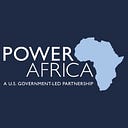Engaging Kenyan Communities in Energy Development
Power Africa’s community-oriented approach to energy infrastructure development helps electricity entities build capacity to engage customers and local communities for mutually beneficial outcomes.
Energy infrastructure development is about more than megawatts; it enables better health care, education, economic growth, and other sustainable development outcomes. Power Africa is leading an approach that puts communities at the center of energy infrastructure development by directly engaging the people whose lands and livelihoods are impacted by it. As a result, energy companies and developers in Kenya are proactively assessing community needs, developing relationships based on transparency and trust, and reshaping how energy infrastructure impacts their customers.
Kenya is at the forefront of meaningful community engagement in the energy sector; the country’s vibrant civil society advocates for energy needs among providers and at all levels of government. Kenya’s stakeholders, such as power utilities, are continuously developing the principles and processes of community engagement that can identify the consequences of energy generation and transmission efforts. Community engagement strategies can mitigate the risks, grievances and disputes, delays, and costs of energy infrastructure development.
In 2018, Power Africa released a Guide to Community Engagement for Power Projects in Kenya to set standards for effective, comprehensive, and transparent community engagement by infrastructure project developers. The guide is based on global best practices and applications for the Kenyan context, as well as knowledge and information gathered from civil society organizations, local governments, community, and religious leaders, among others. Power Africa shared this resource with Kenyan power producers, transmission companies, distribution companies, and regulators as a reference tool.
The guide stresses that effective engagement is not simply a matter of community consultations, but rather a holistic approach to all energy project phases based on trust and transparency, consent without coercion or intimidation, and fair compensation to affected communities. These principles are crucial to building strong community buy-in for projects, minimizing social risk and disruption for developers and investors, and ultimately ensuring sustainability. The guide outlines a three-step process that encourages continuous learning for improved local engagement in the energy sector.
Commitment to the Process
With support from Power Africa, power entities reviewed their own performance through the lens of human and institutional capacity development, including community engagement based on principles in the guide. Some of the utilities identified shortfalls in their community engagement strategies as a hindrance to progress in Kenya’s energy-sector development. Motivated to improve their engagement strategies, the utilities worked with Power Africa to co-develop interventions that would standardize best practices and policies in socially responsible energy development. Power Africa also led capacity-building sessions to support utilities in educating their staff, contractors, and affected communities on socially responsible power development.
● Geothermal planning that puts communities first. With more than 10,000 MW of geothermal potential in Kenya, the resource-development process needs to be community focused for accessing this baseload, renewable energy. Through Power Africa support, GDC developed a community-engagement strategy to improve community relations and promote timely project delivery. The strategy helps GDC conduct proactive public outreach and creates an engagement pathway that reduces project delays and disruptions.
● New community resettlement policies. Through Power Africa support, Kenya Electricity Transmission Company (KETRACO) completed its revised Resettlement Policy Framework, which outlines action plans for communities affected by land acquisition for transmission infrastructure and emphasizes fair compensation for resettlement. The policy framework includes provisions for prompt and just compensation for loss of assets and standards of living, with a clear livelihood restoration strategy. The KETRACO framework integrates international statutes and policies and can serve as a policy guide for the growing number of power transmission projects in East Africa.
In a related action, Power Africa presented findings from an independent study of KETRACO’s Suswa-Isinya line resettlement compensation, along with recommendations to simplify compensation and make it more transparent.
● Responding to community concerns. The Kenya Electricity Generating Company (KenGen) developed a mechanism to handle grievances and complaints; an essential tool for building trust by proactively addressing community concerns about energy development.
● National policy advocacy. Power Africa hosted a capacity-building series to guide Kenyan utilities and other energy-sector stakeholders in developing draft policies to share with legislators and potentially affect an amendment to Kenya’s Energy Act of 2019. The policies cover community engagement, land access, revenue allocation, and resettlement compensation.
● Environmental awareness. Power Africa supported utilities in East Africa to publish the Mainstreaming Wildlife Incident Management into Utilities in East Africa guide, which outlines potential wildlife interactions with energy infrastructure, relevant outcomes and costs, and mitigation measures for smarter utility planning vis-à-vis environmental concerns.
Four years after publication of the community engagement guide, Kenyan energy stakeholders have implemented their new expertise throughout the life cycle of energy infrastructure. Power Africa partners in Kenya continue to develop products and implement effective policies to advance new power-generation projects, distribution expansion, and transmission development across the country. According to GDC Acting General Manager Grace Mwai, “[Our] community engagement strategy will strengthen our relationship with the host communities as we de-risk the geothermal fields in Kenya, allowing for [lower] cost of energy.”
The Future of Community Engagement
More than ever, Kenya will need to engage local and diverse communities for the energy sector to meet the ambitious targets set by Kenya Vision 2030 and net-zero greenhouse gas emissions. By 2030, power utilities aim to expand both generation and transmission capacities to meet Kenya’s growing demand for electricity. Kenya will also need to support a growing economy, which includes large power users; effective community engagement can pave the way for success.
Beyond Kenya, energy developers throughout the region are increasingly investing in densely populated areas for power generation and transmission projects. Community engagement best practices from Kenya can lead regional stakeholders to advance critical energy infrastructure with active community partners.
